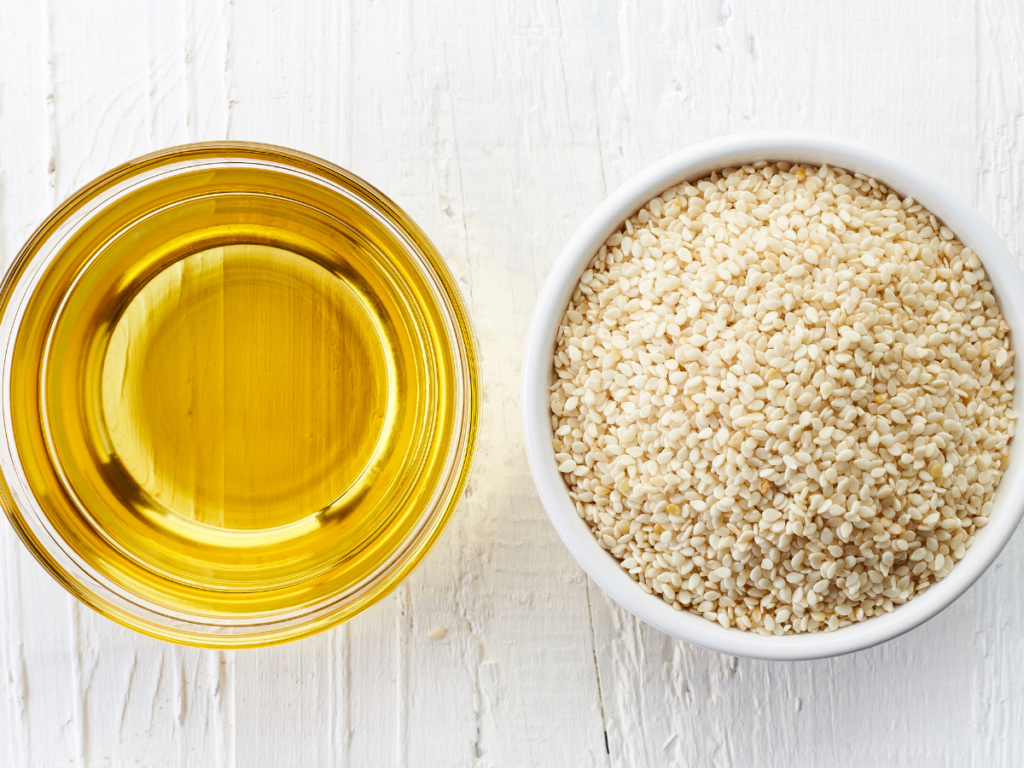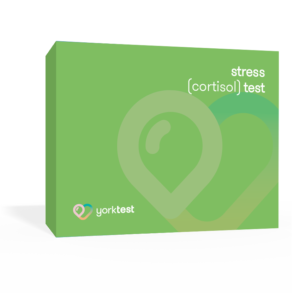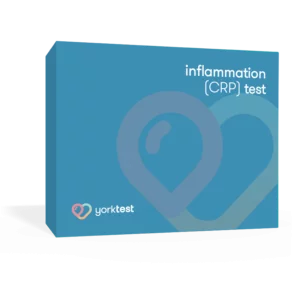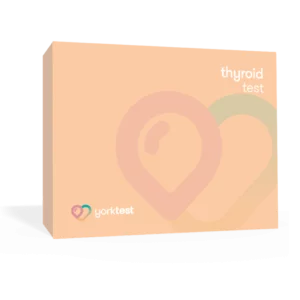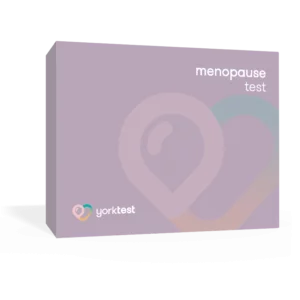- What is a Sesame Seed Allergy?
- How Common is Sesame Seed Allergy?
- Foods to Avoid If Allergic to Sesame Seeds
- Sesame Seed Aliases
- Common Foods Containing Sesame
- Hiding Spots for Sesame Seeds
- Symptoms of a Sesame Seed Allergy
- Is Sesame Allergy Considered a Nut Allergy?
- Sesame vs Nut Proteins: The Cross-Reactivity Conundrum
- Sesame Allergy Testing & Diagnosis
- Sesame Allergy Treatment Options
- Oral Immunotherapy (OIT)
- Avoidance
- Medication
- Takeaway Tips for Managing a Sesame Allergy
Sesame seed allergy is on the rise, catching many off guard with its potentially severe reactions. With FSA regulations mandating sesame labeling on packaged foods, awareness of sesame allergy is growing.
Here we shed light on what triggers sesame seed allergies and why these conditions are becoming increasingly common and problematic. Fortunately, for those affected, there are ways to properly test, treat, and manage such conditions.
What is a Sesame Seed Allergy?
A sesame seed allergy happens when the body’s immune system mistakenly identifies certain proteins in sesame seeds as harmful. This leads to an allergic reaction, which can range from mild to severe. Unlike other food sensitivities or intolerances, a true sesame allergy involves IgE antibodies that specifically target these proteins as foreign invaders.
The main culprits behind this overreaction are storage proteins found in sesame seeds known as sesamolin and sesamin.[1] These can cause symptoms even if you consume just a small amount of sesame. It’s tricky because these tiny seeds sneak into many foods—sometimes without us knowing.
The sesame seed, which is part of the Pedaliaceae family, is one of the oldest oilseed plants and a widely grown species found throughout the world. Given its abundance and relatively low sourcing costs, sesame seeds are more widely used in various foods, like breads, sauces, oils, and confectionaries.
Because of its potential for serious reactions, the FSA recognizes sesame as one of the top allergens requiring clear labeling on packaged foods. That means companies must let you know if their products contain any trace of it so you can stay safe and symptom-free.
How Common is Sesame Seed Allergy?
Sesame seed allergy may not be the first to come to mind when we think of food allergies, but it’s more prevalent than many realise. It has become such a concern that the FSA now mandates its inclusion on labels whenever it’s used as an ingredient.
This increase in recognition correlates with data showing that an estimated 0.49% of the US population reported an existing sesame allergy while approximately 0.23% of the 78,000+ people studied met the symptom-reported criteria for an IgE-mediated sesame allergy, according to research published by JAMA Network.[2] These figures suggest that nearly a million Americans alone could be navigating life with this often-overlooked condition. In the UK, sesame allergy has become more common over the past 10 years and it is estimated to affect 1 in 100 people while 1 in 3 children with multiple food allergies may also have a sesame seed allergy.
The severity of sesame allergy symptoms can range from mild discomfort to life-threatening reactions known as anaphylaxis. Due to its potential seriousness and rising prevalence, understanding how widespread sesame allergies are becoming crucial for public health awareness and individual safety.
Foods to Avoid If Allergic to Sesame Seeds
When you’re navigating a sesame seed allergy, the grocery store be tricky to navigate. You need to know that this allergen hides in plain sight under various names on ingredient labels. It’s not just “sesame seeds” you have to look out for; there are many aliases.
Sesame Seed Aliases
Knowing all the different terms for sesame ingredients can be challenging but it’s important to be aware of different terminologies. ‘Tahini’, for example, is essentially ground sesame paste and is common in Middle Eastern dishes like hummus or baba ghanoush. Other terms include ‘sesamol’, which refers to oil derived from sesame, and ‘benne’, another name often used in Asian cuisine.
If your immune system sees sesame as an invader, these less-known substitutes can trigger it into defense mode with potentially serious consequences.
Common Foods Containing Sesame
Sesame-derived ingredients can be found in many different foods and dishes. While not all of these foods contain sesame, they are some of the most common culprits to be mindful of consuming:
- Baked goods like hamburger buns, breads, bagels, cookies, and flatbreads
- Bread crumbs, bread sticks, cereals, crackers, and melba toast
- Dips, dressings, gravies, marinades, salads, sauces, and soups
- Falafel, flavored rice, noodles, and soups
- Granola, muesli, and halvah
- Herbs, seasoning, and spices
- Hummus and vegetarian burgers
- Processed meats, sausages, shish kebabs, stews, and stir-fries
- Snack foods such as chips, pretzels, rice cakes, granola bars, and candy
- Tempeh and vegetable oil (may contain sesame oil)
- Foods from Middle Eastern, Chinese, Thai, and Japanese cuisines
Non-food sources, like adhesive bandages, cosmetics, hair care products, and pet food, may also contain sesame derivatives. You’ll want to check product labels because laws mandate labeling of major allergens, including sesame seeds. Yet food manufacturers might use less obvious terminology that may not be associated with a potential “allergen.” So being aware helps prevent accidental exposure while shopping or dining out.
Hiding Spots for Sesame Seeds
Eating at restaurants adds another layer of complexity since menus do not always list every ingredient—a veggie burger patty may contain hidden hints of sesames without any explicit mention—or they might refer to components using less common culinary lingo.
If you need to adopt a sesame-free diet, vigilance is key—and so is educating yourself about all possible forms this allergy trigger can take within your meals.
Symptoms of a Sesame Seed Allergy
The severity and type of symptoms can vary greatly from person to person. Some people may experience mild discomfort, while others could have severe reactions that require immediate medical attention. Here are some potential signs you should look out for:
- Skin reactions: Breaking out in hives or skin rash is one of the most common sesame allergy symptoms. You may notice redness, itchiness, or swelling on your skin shortly after consuming foods containing sesame seeds.
- Gastrointestinal issues: Digestive problems such as stomach cramps, vomiting, diarrhea, or nausea are often reported following ingestion of sesame seeds among those who are allergic.
- Respiratory problems: Another typical symptom includes breathing-related symptoms and congestion, which can manifest as sneezing fits, runny nose, nasal blockages, or difficulty breathing due to blocked airways.
- Anaphylaxis: This is the most severe form of allergic reaction and requires immediate medical attention. Symptoms include rapid pulse rate, sudden drop in blood pressure (causing dizziness), difficulty swallowing due to throat tightening, and loss of consciousness if not treated promptly.
If you’re experiencing any combination of these symptoms after eating products that may contain sesame seeds, it’s important to seek medical advice. Your doctor will likely refer you for allergy testing to confirm a diagnosis and explore ways to help manage your symptoms.
Is Sesame Allergy Considered a Nut Allergy?
Sesame allergies can also be confused with nut allergies. It is not uncommon for some people to treat them as one and the same even though sesame is a seed and not a nut. This difference matters because someone with a sesame allergy may not be allergic to nuts and vice versa. Yet, there are cases where people have what’s called cross-reactivity. This happens when proteins in one food are similar to those in another; so if you’re allergic to one, your body might think it’s reacting to its allergen twin.
In children especially, this can occur between seeds and nuts due to their similar protein makeup. Research shows that cross-reactivity exists with sesame seeds, coconut, and other nut allergies, particularly in younger individuals.[3] It isn’t super common, so don’t assume you’re automatically allergic to all nuts and seeds, but it is something to be conscious about when navigating a sesame allergy.
Sesame vs Nut Proteins: The Cross-Reactivity Conundrum
If we take an even closer look at these proteins, things start getting scientific real fast.
It all boils down to the related protein composition among these foods. Shared homology between sesame, peanuts, and tree nut allergens highlights the mechanism for cross-reactivity and allergy sensitization. For example, some kids who react badly after eating hummus (because of tahini—a key ingredient made from ground sesame) might also break out into hives after snacking on peanut butter.
Making sure whether you’ve got this kind of cross-reaction going on requires proper testing by professionals using reliable methods like skin prick tests or specific IgE blood tests for definitive answers.
Sesame Allergy Testing & Diagnosis
If you suspect you may be allergic to sesame seeds, getting tested essential to valid whether or not you have a true IgE-mediated allergy condition and not just a food intolerance to sesame.
Sesame allergy can be diagnosed through various tests, ranging from the classic skin prick method to a comprehensive blood test. Your healthcare provider may recommend a combination of the following tests to accurately diagnose your condition:
- Skin prick test: A safe and low-risk test in which the skin is lightly pricked with a suspected allergen. This can result in a raised bump if the person is allergic. This food allergy test is often carried out in a clinical setting.
- Blood test: A specific IgE blood test, also known as a serum sesame-specific IgE test, can be used to measure the presence of sesame-specific immunoglobulin E (IgE) antibodies in the blood. In addition to clinical blood tests, these are available as home-to-laboratory test kits, offering a convenient way to test for sesame allergy, among other foods.
- Allergen component test: This test may help identify if an individual is susceptible to a severe reaction and provides healthcare providers with information to determine a final diagnosis and management plan. For sesame specifically, a Ses-i-1 allergen component test may help identify if a person is sensitized to sesame.[4]
- Oral food challenge: In some cases, an oral food challenge may be recommended, either by a doctor or an allergist. This test is done under medical supervision and involves consuming sesame-derived food slowly and gradually increasing the amount to accurately diagnose or rule out a true food allergy.
Understanding if you’re dealing with a sesame seed allergy is crucial for managing your diet and avoiding allergic reactions. Equipped with these testing strategies, you can get clear answers about your sensitivities toward this increasingly common allergen.
Sesame Allergy Treatment Options
Living with a sesame allergy can be challenging, but there are several treatment options available to help manage your condition effectively. The primary treatments include Oral Immunotherapy (OIT), avoidance strategies, and medication.
Oral Immunotherapy (OIT)
A promising approach for managing food allergies is Oral Immunotherapy (OIT). This therapy involves gradually introducing small amounts of the allergenic food into your diet under medical supervision. Over time, this may help desensitise your immune system to the allergen and reduce allergic reactions. However, OIT must always be carried out by a healthcare professional due to the potential risks of severe allergic reactions.
Avoidance
The most effective way to prevent an allergic reaction is simply avoiding exposure to sesame seeds altogether. This means carefully reading labels on packaged foods since sesame seeds can often hide in unexpected places like dressings or sauces. It’s also important to communicate about your allergy when dining out or eating at other people’s homes.
Medication
If accidental exposure occurs despite all precautions taken, medications like antihistamines can help control mild symptoms such as itching or hives after consuming sesame seeds. In case of a severe reaction known as anaphylaxis, an auto-injector of epinephrine (EpiPen) should be used immediately and emergency medical help sought. It’s crucial to always carry your medication with you if you have a known sesame allergy.
While these treatment options can help manage symptoms and reactions, they are not cures for a sesame allergy itself. In turn, it is essential to work closely with your healthcare provider or allergist to develop a comprehensive management plan tailored specifically for you.
Takeaway Tips for Managing a Sesame Allergy
If you’ve been diagnosed with a sesame allergy, it’s essential to know how to manage this condition effectively. Here are some practical tips that can help:
- Educate yourself and others: Understand what foods commonly contain sesame seeds or oil. Share this information with your family members, friends, and anyone who prepares food for you.
- Read food labels carefully: Always check the ingredients list on packaged foods. Keep in mind that ‘tahini’ is made from sesame seeds and ‘gingelly oil’ is another name for sesame oil.
- Avoid cross-contamination: Be cautious when eating out as restaurants may use the same utensils or cooking surfaces for different dishes. Consider calling ahead to discuss your dietary needs.
- Cook at home more often: This gives you full control over the ingredients used in your meals. Explore new sesame-free recipes and discover new dishes that you otherwise never known about.
- Create an emergency plan: In case of accidental exposure, have antihistamines handy and consider carrying an epinephrine auto-injector if prescribed by your doctor.
- Contact manufacturers: If unsure about product safety due to vague labeling, contact manufacturers directly for clarification.
Sesame allergies can be challenging but manageable with careful planning and vigilance. Developing strategies like these will empower you to live well despite having a sesame seed allergy.
For more insight on how to effectively test food allergies from seeds, nuts, fruits, vegetables, and animal products, learn more about the Premium Food Intolerance Test from YorkTest. This simple, at-home test kit provides a comprehensive panel and easy-to-understand test results, along with an included consultation with a nutritionist.
Scientific References:
- Rosalina R, Weerapreeyakul N. An Insight into Sesamolin: Physicochemical Properties, Pharmacological Activities, and Future Research Prospects. Molecules. 2021 Sep 27;26(19):5849. doi: 10.3390/molecules26195849. PMID: 34641392; PMCID: PMC8510241.
- Warren CM, Chadha AS, Sicherer SH, Jiang J, Gupta RS. Prevalence and Severity of Sesame Allergy in the United States. JAMA Netw Open. 2019 Aug 2;2(8):e199144. doi: 10.1001/jamanetworkopen.2019.9144. PMID: 31373655; PMCID: PMC6681546.
- Stutius LM, Sheehan WJ, Rangsithienchai P, Bharmanee A, Scott JE, Young MC, Dioun AF, Schneider LC, Phipatanakul W. Characterizing the relationship between sesame, coconut, and nut allergy in children. Pediatr Allergy Immunol. 2010 Dec;21(8):1114-8. doi: 10.1111/j.1399-3038.2010.00997.x. PMID: 21073539; PMCID: PMC2987573.
- Maruyama N, Nakagawa T, Ito K, Cabanos C, Borres MP, Movérare R, Tanaka A, Sato S, Ebisawa M. Measurement of specific IgE antibodies to Ses i 1 improves the diagnosis of sesame allergy. Clin Exp Allergy. 2016 Jan;46(1):163-71. doi: 10.1111/cea.12626. PMID: 26310924.


